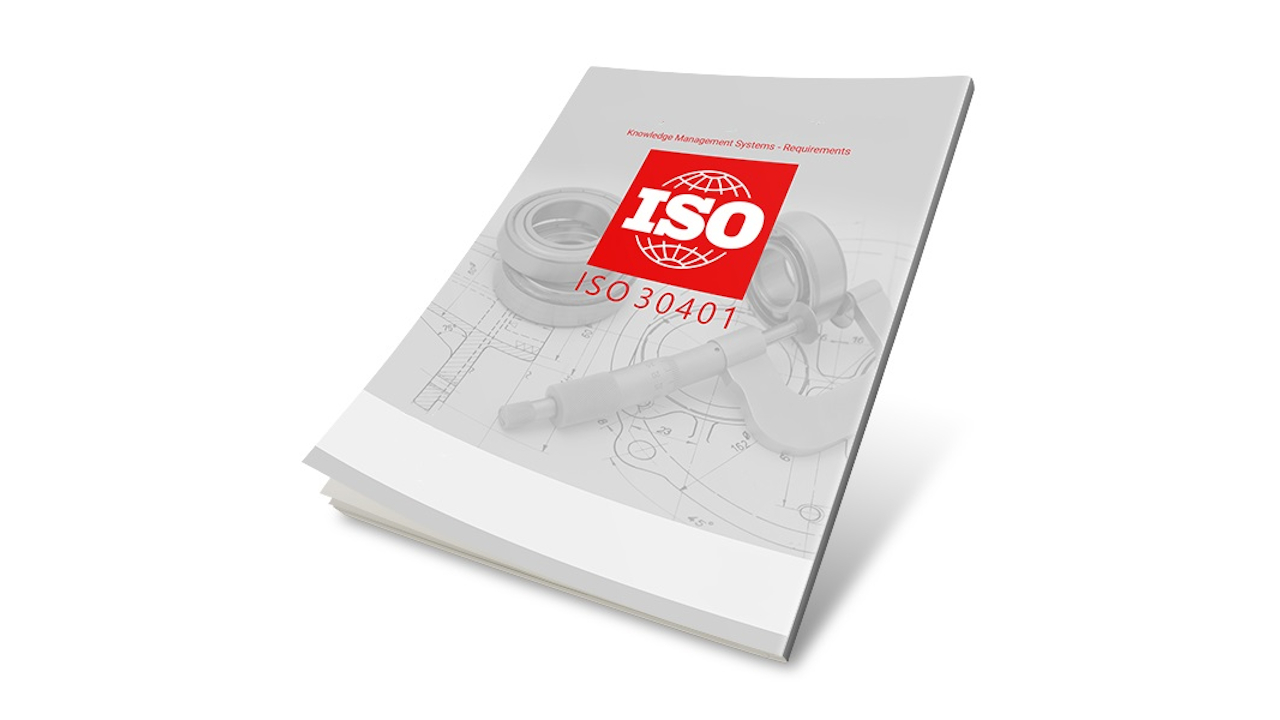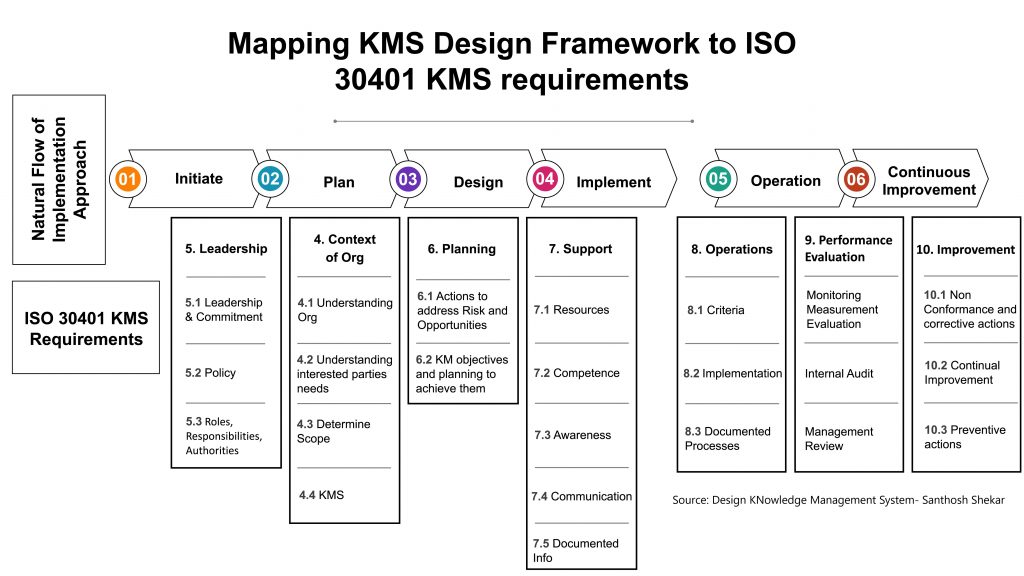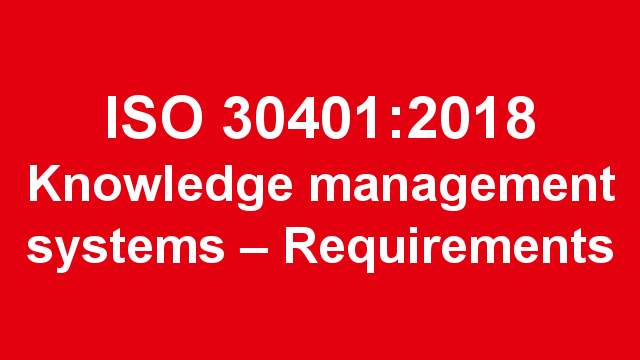
The essence of the ISO 30401 knowledge management standard
This article is part of a series on knowledge management (KM) standards.
Every organization should develop its own knowledge management system (KMS) framework that is aligned with the ISO 30401 KMS standard requirements. In the diagram K.M.S.D 1 below, the KMS framework has been mapped to the standard requirement clauses to provide a general understanding of how to align one’s KM program. It also provides you with an overall understanding of ISO 30401.
The knowledge management system has multiple dimensions that need to be established, implemented, maintained, and continuously improved.
Whether you adopt standards or not, consider that any KM program or project has the following typical cycle. The project gets initiated, with management buy-in or sponsorship. The KM team then develops the plan for the KM system requirements and then works with IT functions and other functions to design the KM practices/IT system or develop processes. Once these are developed fully, the system is implemented by conducting testing, training, and documentation. After the system goes live the team needs to support the user community and capture quantitative and qualitative data points of the usage and effectiveness. With every user feedback channelized into systematic development, the continuous improvement of the KM system keeps evolving.
Now, when we look at the ISO 30401 KMS requirements, it pretty much follows the KM execution lifecycle. The same has been represented by the KMS design framework mapping to ISO 30401 requirements. This clearly indicates that the standard provides the framework for every individual and organizations to get started with KM programs, and follow the KM lifecycle regardless of the KM solution anyone implements.
Let’s assume, if any organization wants to start with KM, or if you have to define KM to management and board, then then the ISO 30401 KMS standard is the starting point, which provides guidance on how to go about developing KM systems.

Header image source: Adapted from اینوتکس ایران – InKnowTex Iran.







This KM Execution Life Cycle is an interesting one and better for the industries to follow.